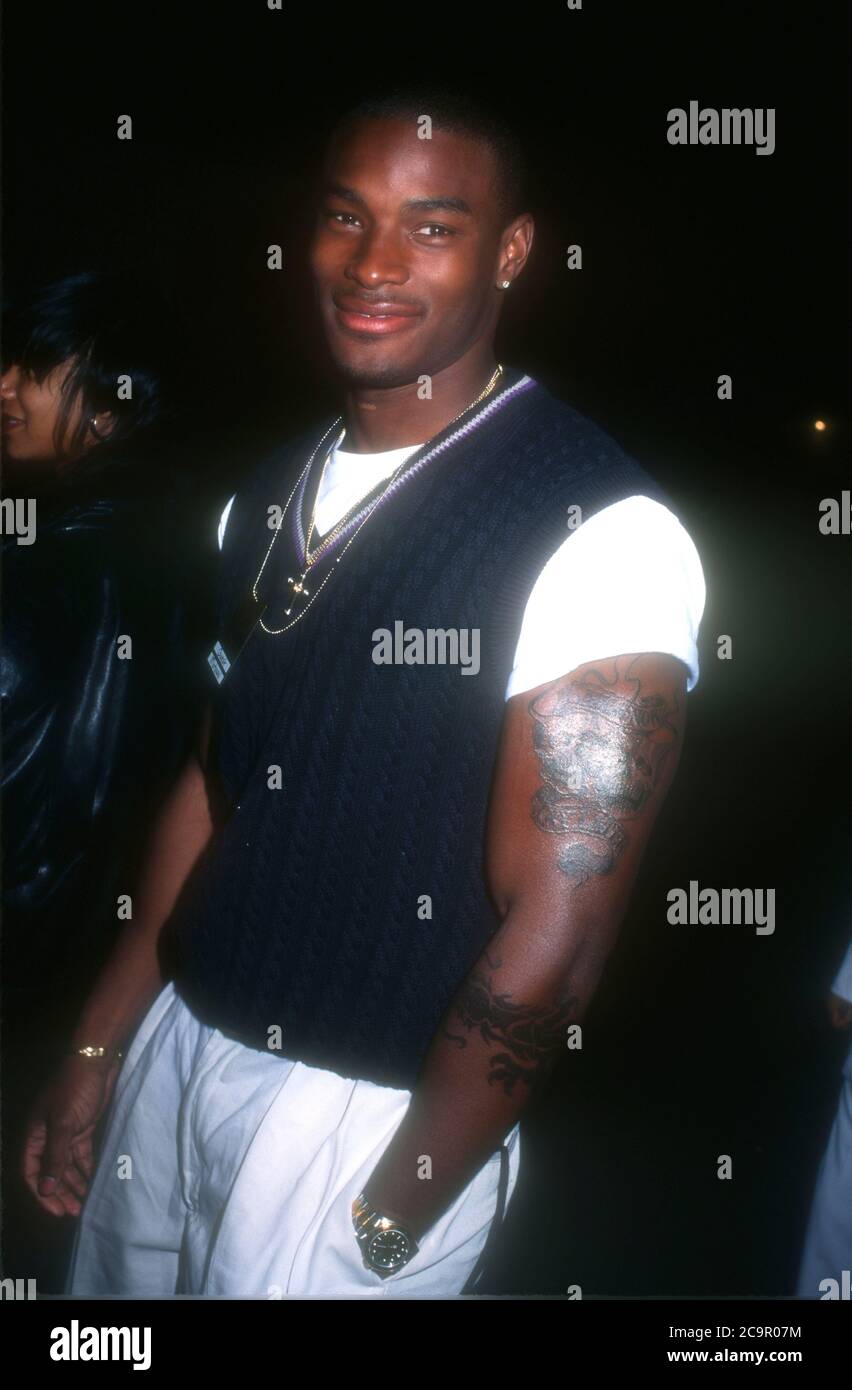Tyson Beckford: The Rise Of A Supermodel & His 90s Reign
Did the 1990s truly represent the golden era of male supermodels, and if so, who reigned supreme? The answer, undeniably, points to Tyson Beckford, a name synonymous with the decade's most iconic runway walks, magazine covers, and groundbreaking advertising campaigns.
Tyson Beckford's trajectory in the fashion world wasn't merely a career; it was a cultural phenomenon. He emerged during a time when the industry was undergoing a seismic shift. While the names of Linda Evangelista, Cindy Crawford, Christy Turlington, Naomi Campbell, and Kate Moss were dominating the female modeling scene with an unprecedented level of fame and influence, the male models were beginning to command similar attention. Beckford, along with contemporaries like Marcus Schenkenberg, Jason Lewis, and Mark Vanderloo, helped redefine masculinity in fashion, but it was Beckford who arguably reached the pinnacle of success, carving out a legacy that continues to resonate.
Born Tyson Craig Beckford on December 19, 1970, in the Bronx, New York, Beckford's story is one of resilience, determination, and transformation. Growing up between New York and Jamaica, he was discovered, almost serendipitously, on the streets of the city. This chance encounter propelled him into a world of high fashion, jet-setting lifestyles, and unprecedented opportunities.
| Attribute | Details |
|---|---|
| Full Name | Tyson Craig Beckford |
| Date of Birth | December 19, 1970 |
| Birthplace | Bronx, New York, USA |
| Height | 6 ft (1.84 m) |
| Profession(s) | Model, Actor, Producer |
| Known For | Ralph Lauren Polo model, Roles in films like "Into the Blue" (2005), "Biker Boyz" (2003), and "Zoolander" (2001) |
| Notable Achievements | VH1's Model of the Year (1995) |
| Key Campaigns | Ralph Lauren Polo, Tommy Hilfiger, and others |
| Social Media | Tyson Beckford Instagram |
In the 1990s, Beckford was a force. He wasn't just another face; he was the face. He graced the covers of countless magazines, became a fixture on runways across the globe, and, most significantly, became the iconic face of Ralph Lauren Polo. This partnership catapulted him to international recognition and solidified his status as the quintessential male supermodel of the era. He was the man everyone wanted to work with, the face that launched a thousand campaigns, and the benchmark against which other male models were measured. He was, in a word, unforgettable.
The rise of Beckford also coincided with the rise of the supermodel phenomenon. Just as female models like Linda Evangelista, Cindy Crawford, Naomi Campbell, and Kate Moss became household names, so too did Beckford become a recognizable figure. He achieved fame and fortune on par with his female counterparts, a testament to his unique appeal and the evolving landscape of the fashion industry. The demand for male models was growing, and Beckford was at the forefront of this burgeoning trend.
His influence extended beyond the runway and advertising campaigns. Beckford embodied a new type of male ideal, one that was both aspirational and accessible. He challenged traditional notions of masculinity, and his presence in the fashion world opened doors for other black male models. He became a symbol of representation, paving the way for a more diverse and inclusive industry. His impact wasn't just aesthetic; it was cultural.
The Hulu docuseries 'In Vogue:' provided a deeper look into Beckford's life, including his reflections on the tragic murder of his brother and how this event intertwined with his career. The series allowed fans to understand his resilience and his journey through the highs and lows. He speaks candidly about his past and how it shaped him as a person and professional.
Beckford's story is a reminder that male supermodels can leave an indelible mark on popular culture. He was not only a model; he was a brand. And this brand has continued to live on, even as the fashion industry evolved. He has remained active in the industry, collaborating with brands and appearing in various media projects, demonstrating that a true icon endures.
The world has witnessed how the male models of the 1990s, including Beckford, continue to influence the fashion world. One of the reasons for this enduring appeal is their sheer visibility during that decade. They were everywhere in magazines, on billboards, in music videos, and on television. This constant exposure solidified their place in the collective consciousness and made them household names. They embodied an aspirational lifestyle that resonated with people worldwide. The aesthetic of the '90s was a blend of high fashion and street style, and these models perfectly represented this fusion, captivating audiences with their unique combination of glamour and approachability.
The fashion industry has continued to evolve, and even though different eras and styles have emerged, Tyson Beckford continues to be relevant. He proves that when it comes to male models in the '90s, no one was touching Tyson Beckford.


